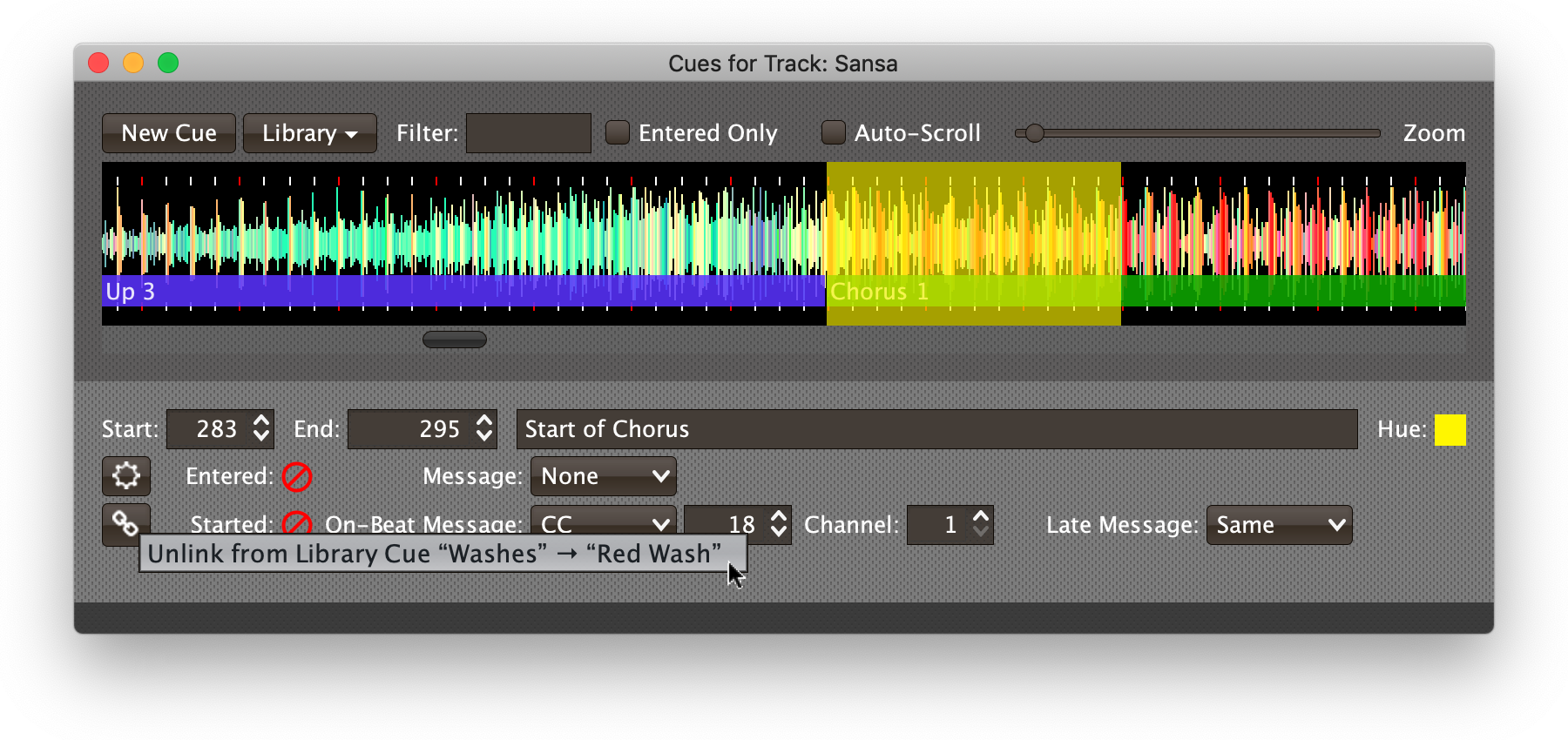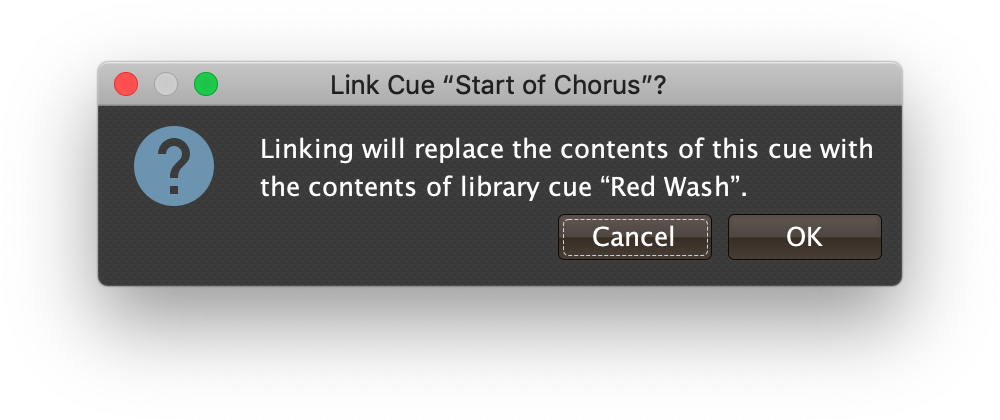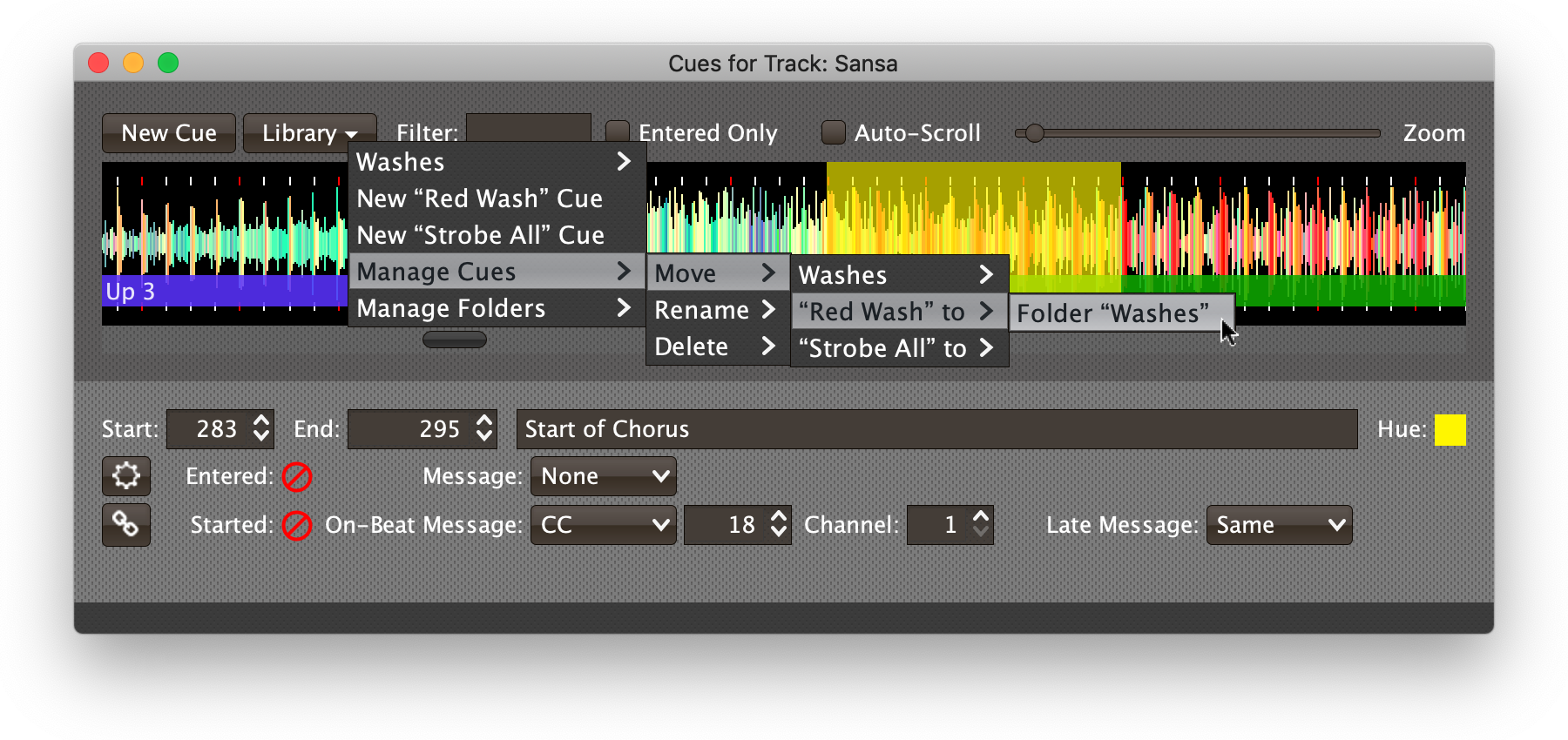The Cue Library
When building a show with a group of tracks, there will often be a shared set of lighting looks or presets that will be useful in more than one track. Once you have set up a cue that sends the proper messages to achieve that look, you can make it available for reuse in any track by adding it to the Cue Library. To do that, choose Add Cue to Library from the Cue context menu.
As soon as you have a cue in the show’s library, a Library ▾ button appears next to the New Cue button in any Cue Editor windows you have open for tracks in the show (and any existing cue rows also get new link buttons just below their gear buttons, described below). Clicking Library ▾ gives you a menu of all the cues that you have added to the show’s library, and choosing one creates a new cue (in the same location that the New Cue button would), based on the template cue that you put in the library:
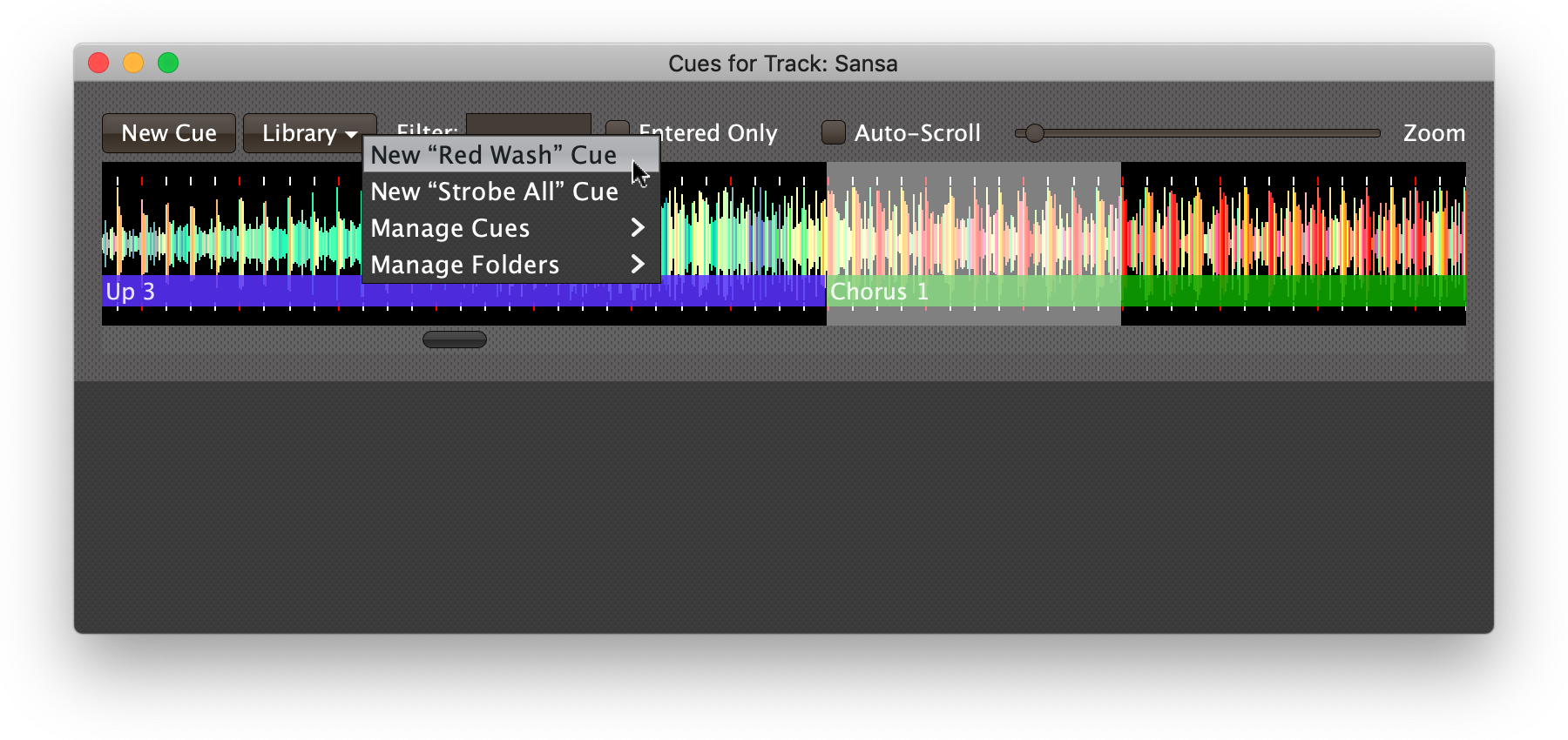
|
The names that appear in the Cue Library are the names (comments) of the cues that have been added to it, so it makes sense to make sure your cue is well named before adding it to the library, although you can rename them later using . This image also shows the strip of phrase information which appears along the bottom of a track on which the DJ has performed phrase analysis, which can be very helpful in figuring out good places for cues. |
Another way to choose a cue template from the library is to right-click (or control-click) anywhere outside an existing cue in the waveform at the top of the Cue Editor window:
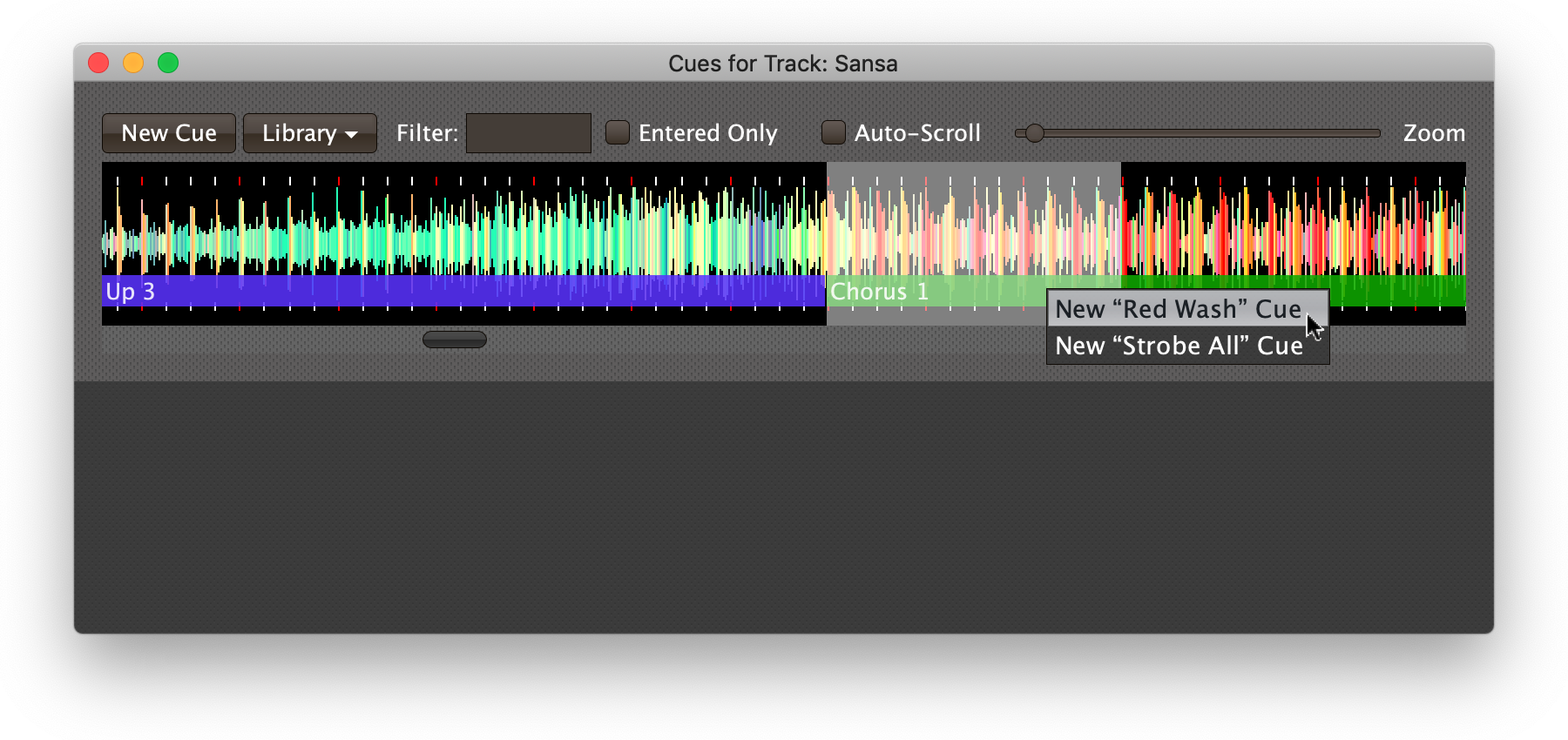
Using either of those approaches to choose New “Red Wash” Cue in the menu would result in the creation of a cue based on that template in the selected region of the track:
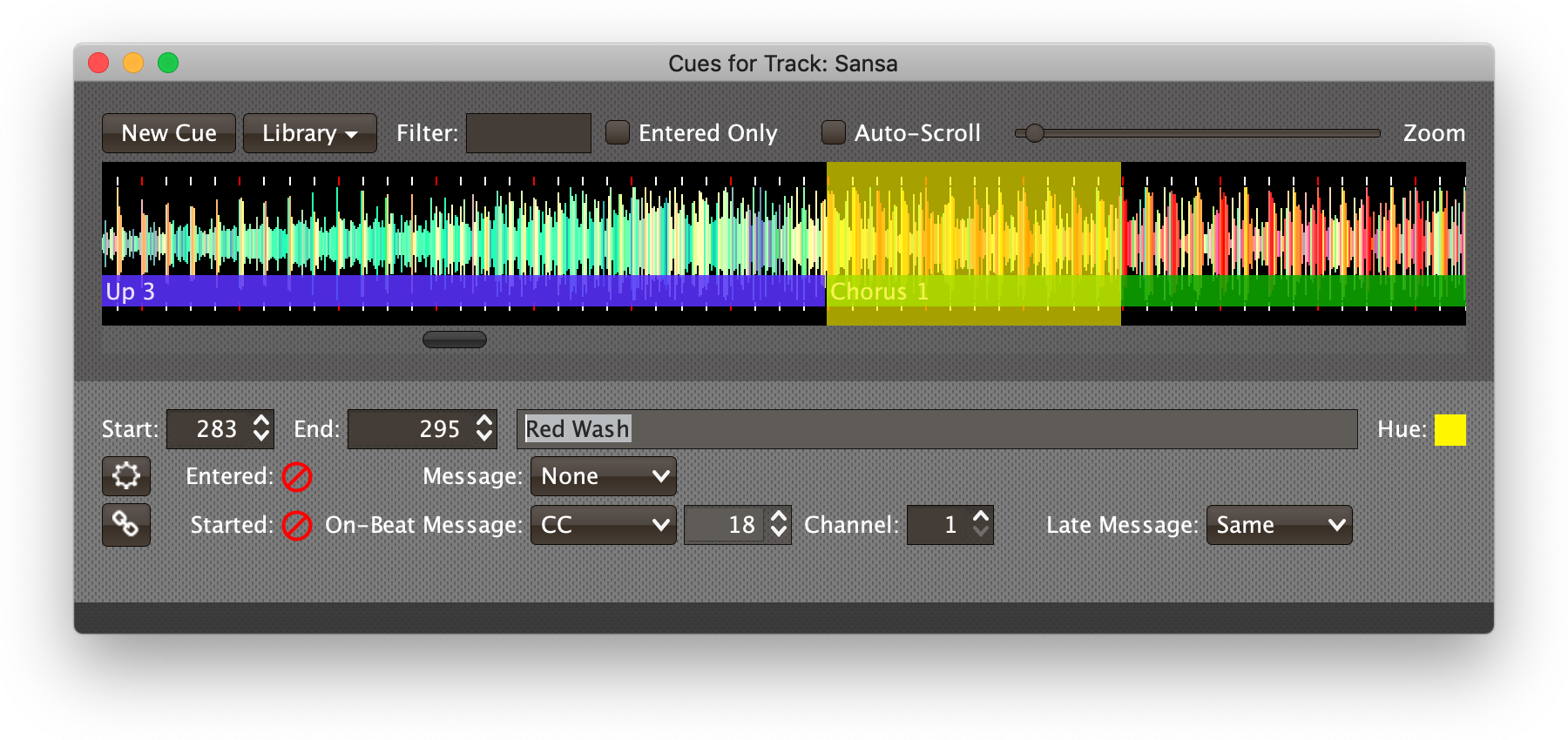
The new cue will share any of the MIDI message configurations and Expressions that were present in the cue that was added to the show library.
Linked Cues
The linked chain in the new link button towards the bottom left of the cue row indicates that this new cue is linked to the library cue from which it was created. Any changes you make to this cue (apart from the location, name, and display hue of this copy) will instantly be applied to the library cue, and to any other cues that are linked to it, whether in this track or in any other track in the show. This makes it very easy to keep your related cues working the same way.
| If you do want to make notes about the specific role this copy of the cue will play in your show, the comment text (“Red Wash” in this case) starts out selected as soon as you have created it, making it easy to update. |
If you ever have a cue that started out linked to a library cue, but you want to make it work a little differently, you can break the link using the link button:
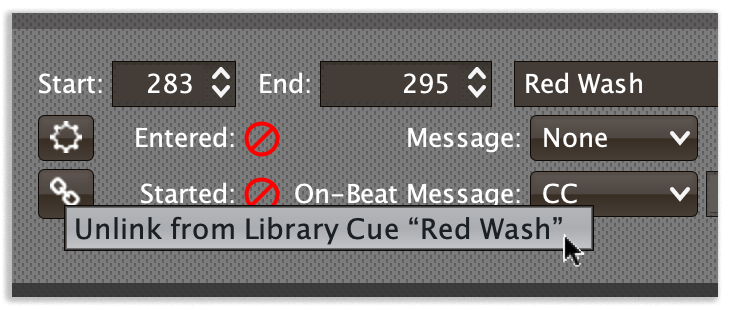
Once you’ve done that, the cue will exist indepently, and changes you make to it will not affect the library nor any other cues. The link button changes to show a broken chain.
If you change your mind and want to re-link it, you can use the link button again to do that. In the same way, you can link together any cues you created without using the library, if you ever decide they should be linked. Simply click the link button in each cue you want to link, and chose the library cue that you want it linked to:
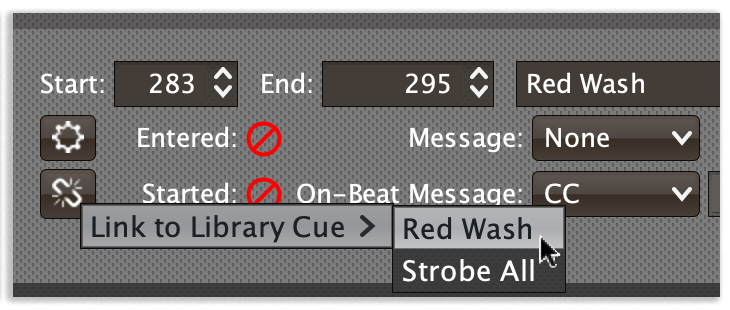
|
If the cue you are linking to a library cue has any different message configuration or expressions, they will be replaced with the versions in the library when you establish the link, so you will need to confirm that you want the linking process to proceed.
|
Renaming Library Cues
As noted above, if you change your mind about what a library cue should be called, you can choose the cue you’d like to rename in the submenu:
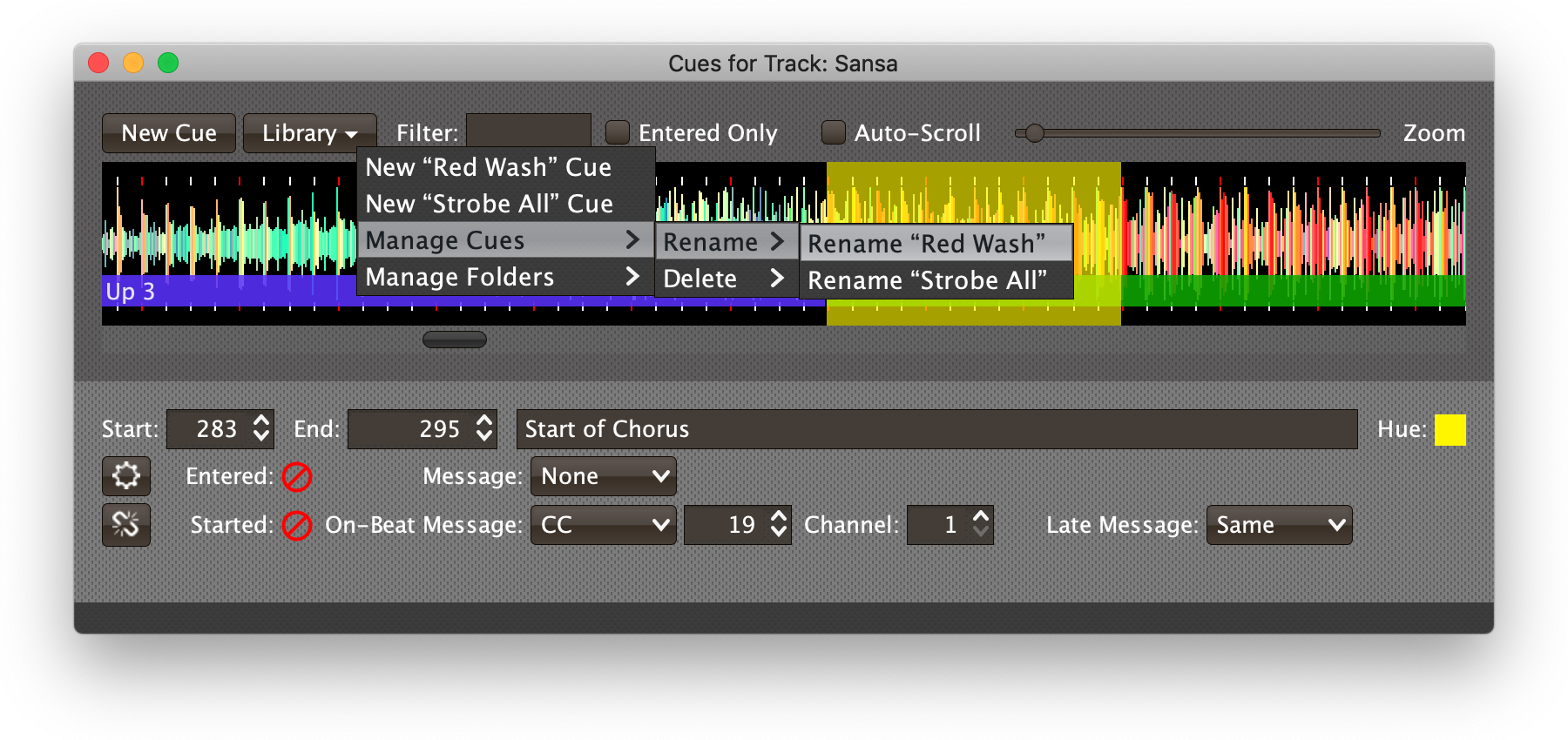
This will bring up a dialog where you can choose a new name for the cue.
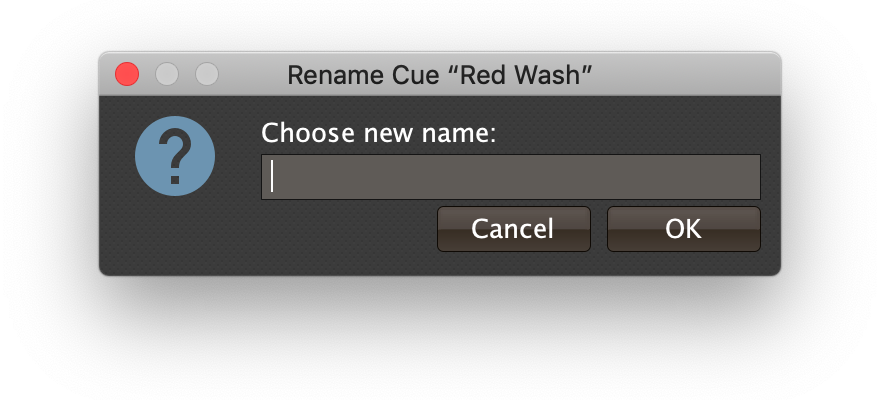
You can choose any name which is not already in use by another library cue, and it will take that new name. The cues that link to it won’t be renamed (since they may all have their own unique names by this point), but they will stay linked to it under its new name.
Deleting Library Cues
If you decide a cue no longer deserves to be in the library, you can use a similar submenu to remove it:
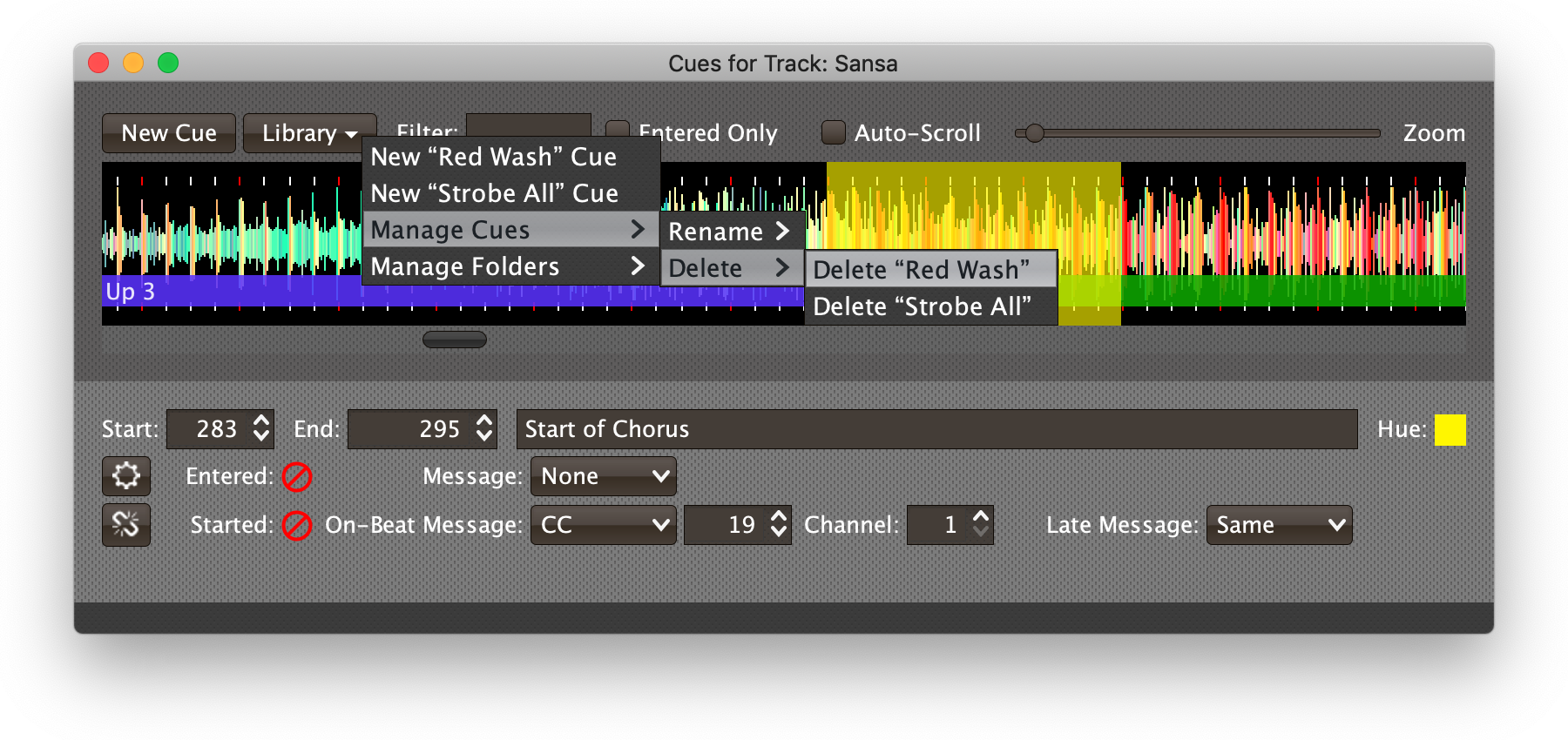
You will be asked for confirmation, since this operation can’t be undone. Also, if the library cue is currently linked to any cues in your show, the confirmation dialog will warn you about this, and explain that those cues will all become unlinked if you proceed with deletion of the library cue.
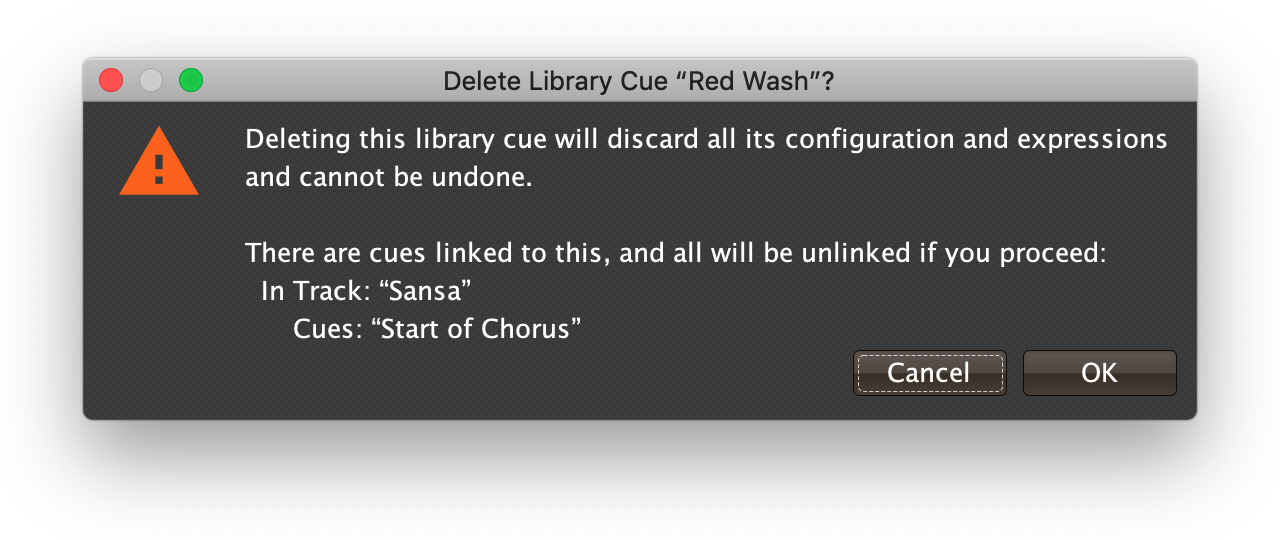
Cue Library Folders
If you collect a large number of cues in your library, the menu can get inconveniently large and make it hard to find the cue you are looking for. You can address that problem by organizing your cues into folders. At the bottom of the Library button menu there is a Manage Folders submenu.
When you have no folders, the only option in that menu is New Folder. Choosing it opens up a dialog in which you can enter the name of the folder you would like to create:
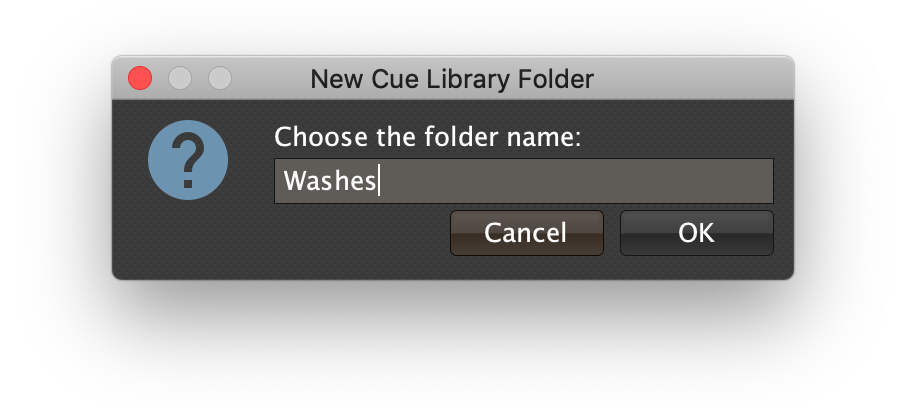
As soon as you have created a folder, the menus for choosing library cues (both in the Library button and in the waveform context menu) expand to show all the folders as submenus before the non-folder cues:

The context menu option for adding a cue to the library also transforms into a submenu allowing you to choose whether you want to add it to a folder or to the top level of the library.
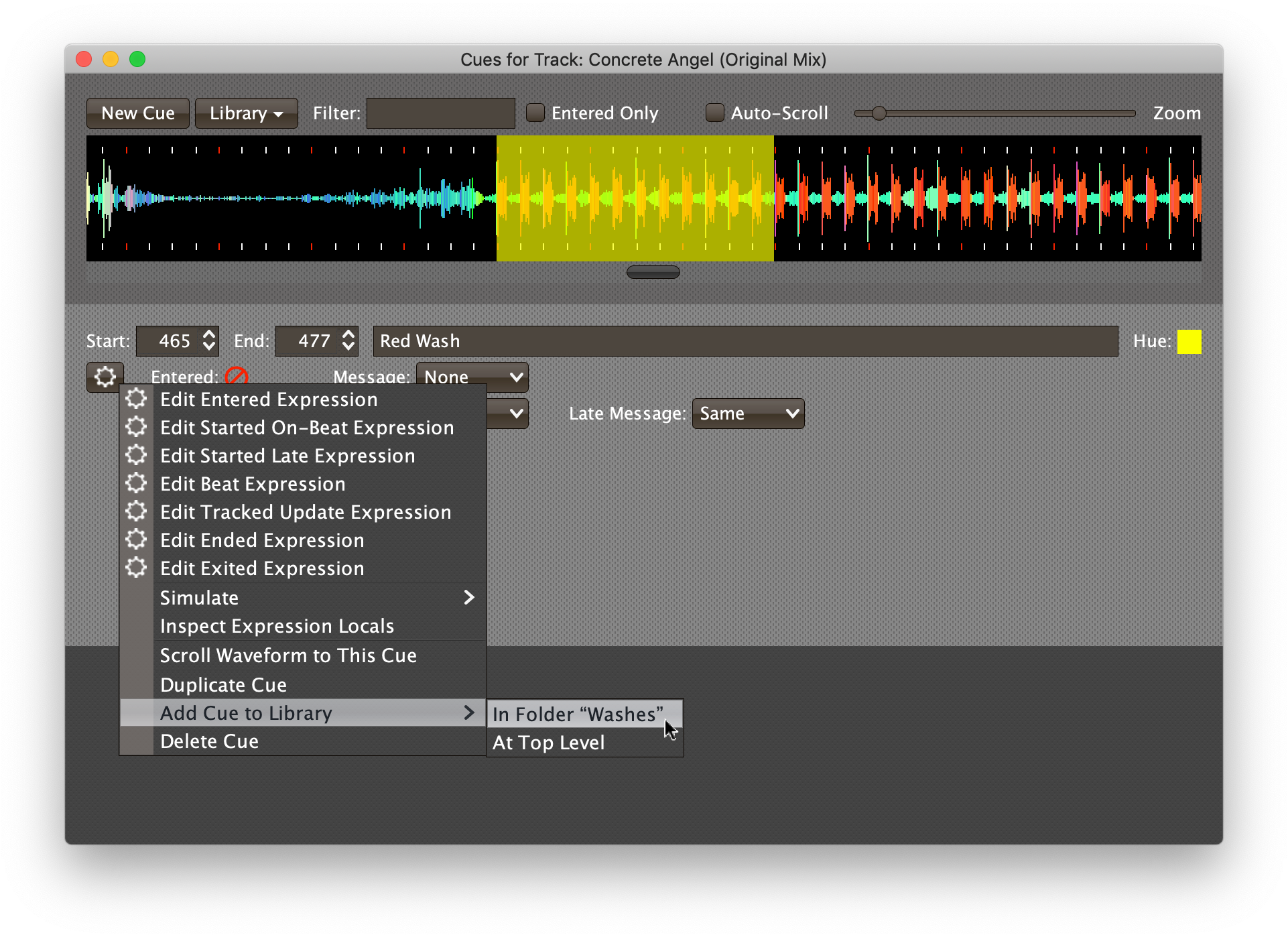
|
If you have existing cues in the library that you would like to move into your new folders, you can do that using the new submenu that appears as soon as you have created folders:
|
Once you have organized your cues into folders, finding and picking them out of the appropriate submenu can be easier and faster than scrolling through a single giant menu.
Once you have folders, the Manage Folders menu also allows you to rename or remove them. Removing a folder moves any cues you placed inside it back to the top level of the cue library.
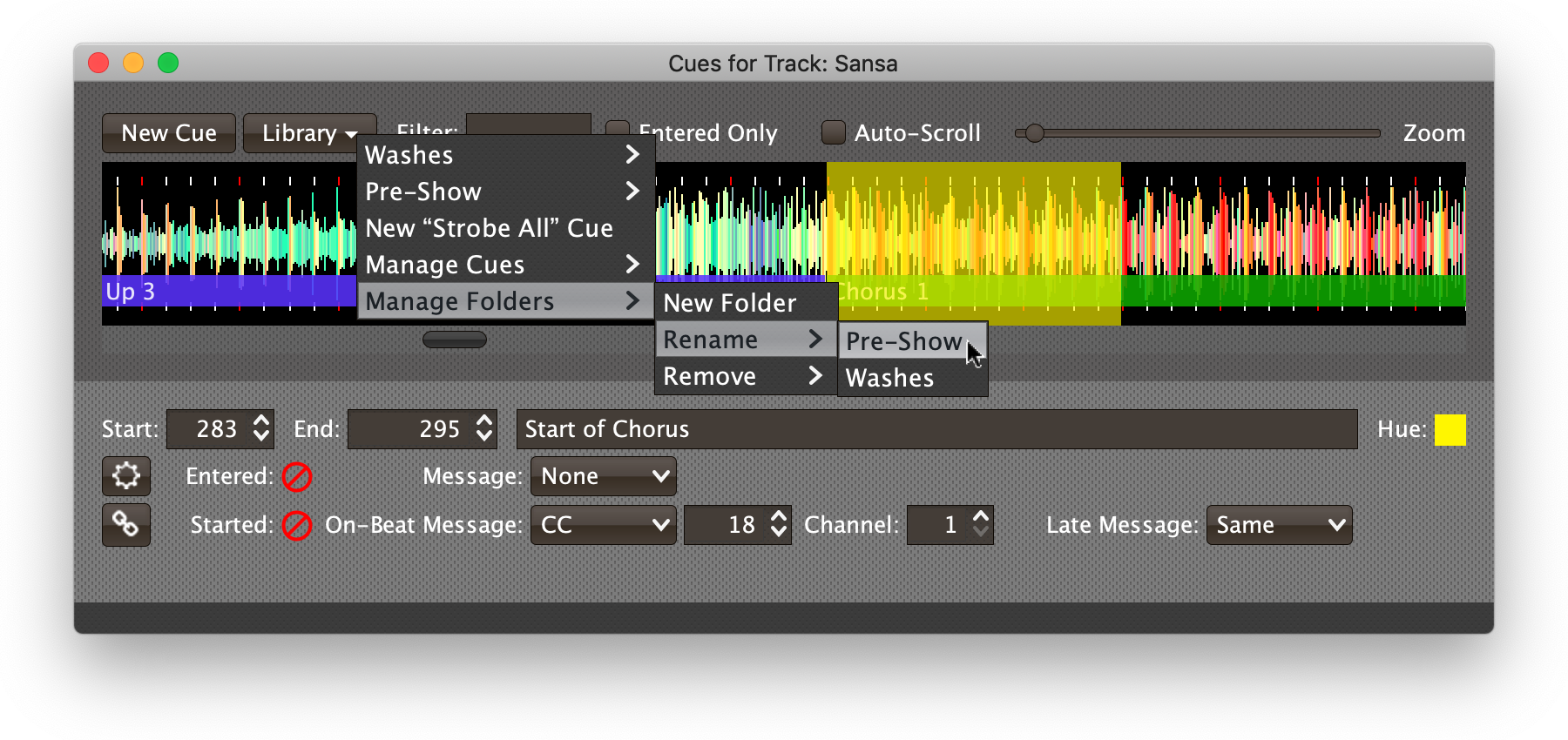
Also, once you have moved cues into folders, the link button will help you remember where you’ve filed them by showing the path to the cue that you are linked to:
